We've inadvertently gotten into the habit of cutting to the chase when it comes to gear reviews. No more setting the stage, leading the reader in, and feigning objectivity only to deliver our verdict to a wanting audience. Partially, this is because that format is pretty boring and tired. Mostly, however, it's because -- if one of us is taking the time to write about an item -- we're passionate about it, one way or the other.

You just want to know if the rod, reel, bag, pack, accessory, etc we're writing about is worth your hard-earned money or just a piece of junk, right? That said, I'll get to the point: I have three favorite possessions in the world and the Patagonia Stormfront Backpack is one of them. It joins another Patagonia product, the Patagonia Nano Puff (which we reviewed last year), in this oh-so highly exclusive group of my favorite possessions. The third item, in case you're wondering, is a cheap bottle opener inscribed with a gradually wearing away Sam Adams logo. I received it from a ditzy girl wearing a low cut top who, along with two cohorts, invaded a normally quiet local bar in order to promote some unsavory concoction Sam Adams was trying to peddle at the time. Not unlike the other two items in this elite group of three, my Sam Adams bottle opener does what it is supposed to do with minimalist, simplistic ease and rugged toughness. It's also worth mentioning that, in a house where nothing smaller than a piano lasts more than six months without disappearing, it somehow has remained a fixture.
This isn't Patagonia's first incarnation of the bag, but it's seen relatively few changes throughout its lifetime. This latest incarnation ditched the waist strap and sized down a bit, and that's fine. This bag isn't meant to carry your luggage, it's meant as a day pack that will protect whatever you place inside it from the dangers posed by water. Fly fisherman are typically and quite literally surrounded by this danger throughout a day on on the river, and in an era where electronics that need to stay dry are becoming ubiquitous even for the most old-fashioned of our group, this sort of protection is becoming essential.
Patagonia's Stormfront pack isn't the only dry bag on the market, in fact there are dozens, with more and more popping up every day. We've seen and tested offerings from other manufacturers, with mixed results, but none that deliver as well as Patagonia's. It's not that the other bags don't deliver on their main purpose -- keeping your goods dry -- it's that they don't do it at as elegantly and simply as the Storm Front.
USES
The Patagonia Stormfront backpack does everything I need it to do, absolutely nothing more and nothing less. If you're like me, looking for a back to carry DSLR, two to three lenses and other odds and ends like your phone and memory cards, this is the perfect bag for you. If you're just looking for something to throw an extra layer, some food for the day and your small electronics, the bag is a still a winner.
As mentioned above, the bag is day-pack size, perhaps a tad bit more. I could tell you how many cubic liters it holds, but unless you're a bag nerd, that's going to mean nothing to you. Suffice it to say it can comfortably hold loads like those described above. I can typically stash my camera gear, a light jacket, a few snacks and other miscellaneous items inside comfortably. If you don't have bulky camera gear like I have, you can fit virtually any list of single-day needs in the Storm Front pack with ease.

EXTRA FEATURES
There aren't many here, which is part of what I love about this bag. The bag itself isn't padded or insulated, it doesn't have six inner compartments and it doesn't have 14 straps dangling from it for which you have no use. Patagonia describes it as "ultrasimple" and that descriptor is fitting. That's not to say that you're buying nothing more than a sack, there's some stuff going on here, just not more than you need.
External Rod Tube Clasps
In case you're hiking in, your rod straps on easily to the outside of the pack. Patagonia pictures these but never seems to mention them and I can never figure out why.
Padded Back/Spacer Mesh
Adds breathability and comfort on hot days without adding too much bulk and will also keep rigid items on the inside from poking into your back as you carry them.
Small, Zippered Mesh Pocket on the Inside
This is mounted on the inside of the back panel. It will hold a limited number of small items you don't want banging around lose in the pack (i.e. phone, wedding rings, compact cameras).

Padded Gear Case
This is what really makes the Stormfront a standout for photographers. This case fits neatly into the bottom third to half of the pack and provides protection for sensitive items. It is perfectly sized for my Canon 5D Mark II (center compartment) and a lens or two in each side compartment. Even my relatively large 70-200mm lens fits neatly inside. Some of you will find other uses for the gear case, without question, but it is hard to imagine that Patagonia didn't have photographers in mind when they fashioned it.
CONVENIENCE
One of the paramount reasons to purchase the Stormfront, convenience, is big. Part of this is due to it's simplicity, but the majority of it is derived from one component: the zipper. Unlike most competing bags which offer true waterproof protection, not water resistance, the Stormfront Pack offers a zipper closure instead of a roll-top. This means preposterously easier in-and-out of the bag. In my experience with roll top bags, I found myself neglecting to take the bag off my back due to the fact that I didn't feel like dealing with the ordeal roll-tops present. The Storm Front is open in a second flat. Yes, in case you've read it elsewhere, the zipper requires a bit of force to put into action. However, unless you're impossibly frail or unnecessarily cranky about these sort of things, don't concern yourself with it.
PROTECTION
There's not much to say here about the bag delivering on keeping water out, except that you'll quickly realize you won't have to take my word on it. The bag is made of extremely durable 840-denier double polyurethane-coated nylon fabric, which will set aside any puncture or tear worries you might have the first time you handle it. All seams are glued and welded.
The zipper is corrosion proof, so forget about those concerns if you're a salt water angler. As for feeling confident the zipper isn't going to let water in? Try this: puff the bag up a bit, zip it closed while making an effort not to squeeze the trapped air out. Then try to squeeze some air out. Maybe even lean on it a bit. Nothing. I'd like to tell you to lay on it, after which you'll find that the zipper still won't let out a drop of air, but I don't make the bag and can't tell you that it is intended to have a grown adult laying on it while it's filled with air. So maybe cut my suggested experiment off at the leaning part.
Either way, you get the point. No air out = no water in.
CONCLUSION
In typical fashion, Patagonia has delivered yet another piece of gear that does what it claims to do, and does so exceedingly well. I carry several thousand dollars of camera gear and electronics in this bag every time I hit the water and do so with complete confidence. Perhaps the only drawback of the Patagonia Stormfront Pack / Backpack is its price tag ($299), but I could easily make the argument that the quality justifies the price. Considering the fact that Patagonia can't seem to make these bags fast enough to meet demand, it is quite likely I'm not the only one that feels this way.




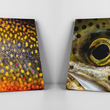
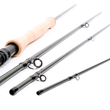
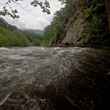




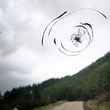









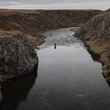
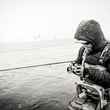




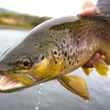


Comments
Aileen Lane replied on Permalink
Great review - keyword here is ultra simple. I bought a backpack that had all sorts of pockets, and compartments thinking it will allow me to be more organized and carry everything I needed for a day trip. Only problem was, I couldn't find anything without going through all the pockets. LOL
John replied on Permalink
Looks like the interior, padded gear bag no longer comes with the pack, which is a big shame. With it I would consider the price worth it, without it it's a big black hole pack that I will have to put a separate camera bag into. Bummer.
angelo replied on Permalink
If your going to put your books in this thing and go to your art history class well okay.
If you need a real dry bag get a Filson or the new Yeti.
Pages